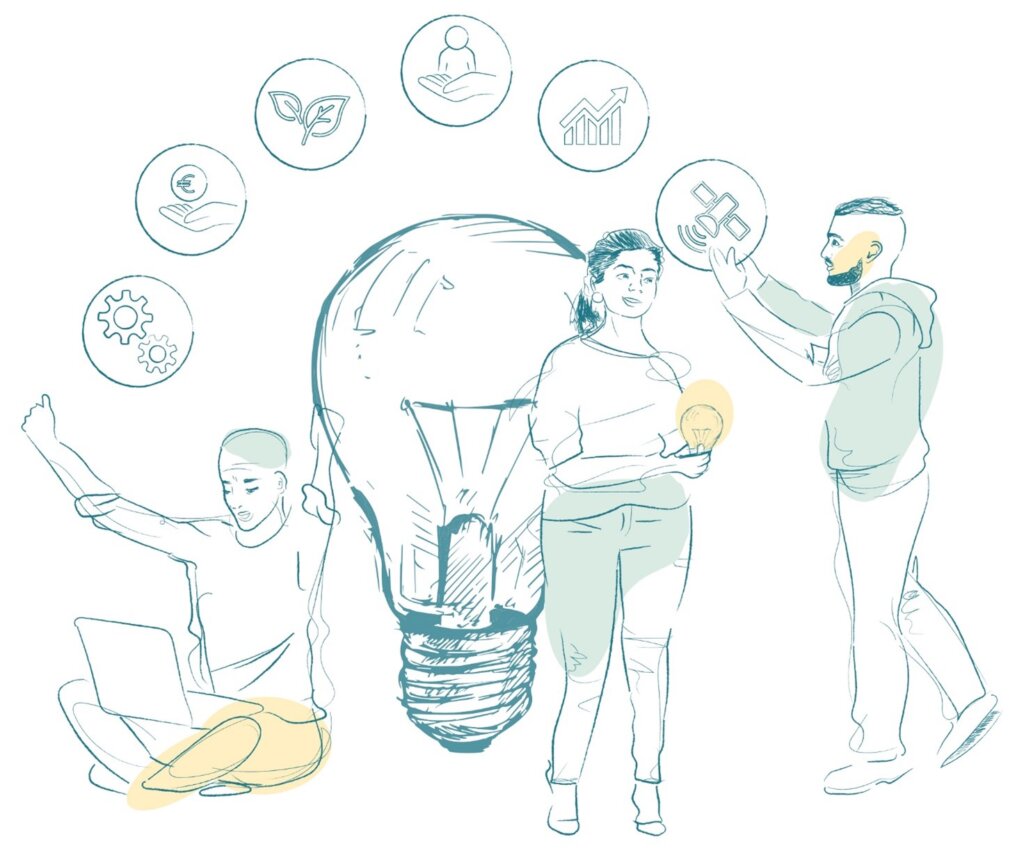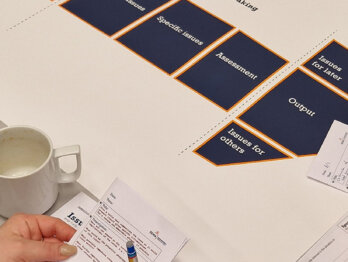The Innovation Barometer: Measuring innovation in Finland

Finland conducted its first public sector innovation barometer in the Central Government. The results are in and once again reaffirm that Finland gets many things right. 93% of organisations innovated during 2020-21. Innovation activities are motivated in particular by the needs of citizens and clients, productivity and new technologies. Drivers of innovation activities are also reflected in individual innovations and their effects.
Innovation Barometer: what and why?
The Innovation Barometer is the world’s first official statistics on public sector innovation, now implemented in five countries, providing innovators and decision makers with systematic knowledge of what thousands of innovators ‘actually do’. In spring 2022, the Ministry of Finance sent an innovation barometer survey to a total of 142 organisations, such as ministries, agencies, companies performing separate central government tasks, institutions subordinate to Parliament and universities. The survey was intended for people working in the executive boards of organisations, as their contribution is very important in enabling and steering innovation activities in the public sector. The respondents answered questions from their own perspective, and the answers do not necessarily represent the official position of the organisations.
Finland is considered a model for the renewal of public governance. However, public sector innovation activities and their potential have not been fully exploited. Their domestic visibility does not correspond to the attention received by many other areas of work, even though other countries often focus on Finland when talking about, for example, futures and foresight or experiments. In the end actual innovations are needed to anticipate and adapt to changes in operating environment and enhance current tasks. The public sector must renew itself in order to maintain its functional capacity even in challenging situations. Trust in the government is in a delicate balance, and the inability to produce solutions to problems can erode trust in the government. Conducting an Innovation barometer is a way to create research-based knowledge to foster effective public sector innovation.
Did your organisation have innovation activities in 2020-2021?
Enhancement meets adaptation
What are the most common innovations in the Finnish Central Government? Process innovations are the most common, followed by service innovations and product innovations. We did not specifically ask questions based on OPSI’s innovation facets model, but you can see at least characteristics of enhancement-orientation and adaptation to ecological challenges and COVID-19. Available working time and money are bottlenecks in innovation activities. Organisations should pay attention to them, as successful innovations bring cost savings and enable the use of working hours to explore new opportunities and create new ones instead of routine work.
Kela (the Social Insurance Institution) uses machine vision to make processing of applications faster. The National Archives is developing automatic recognition of hand-written texts. The National Land Survey and the Forest Center are utilizing satellites in new ways to ensure the likes continuity of critical functions and sustainable forestry by harnessing the new technologies to provide more accurate and timely information. State Treasury created quickly a fully digital service to compensate businesses affected by the COVID-pandemic – a success story, that might have not been possible, if the innovators working for the agency were not involved in drafting the legislation on the financial support for businesses during the pandemic (see box 4 in the report of the innovation barometer).

Top-down meets bottom-up
Based on the results, innovation activities are not particularly strongly steered. 34% of the respondents said their organization had an innovation programme and 54% had a centralized function to coordinate innovation activities. The significance of the government programme is most visible in the steering. As seen in the chart below, administrative branch and the agency level are important too. However, the European Union and the sustainability goals set in the Agenda 2030 are less important components when it comes to steering innovation. The Finnish Government is currently conducting a study to create a framework for mission-oriented innovation, which could be a way to show more determination in innovation and bring change For public sector innovation the challenge is, that so far, the mission-oriented efforts seems to be mostly oriented in promoting innovation outside the public administration.
How much steering and policies are provided for innovation by the following parties in your organisation?
Obviously it is also a good thing that the public sector innovation system leaves room for bottom-up initiatives and has resources to react to change. For example the Finnish Customs is creating a new chatbot Hippu with expected resource savings in the range of 4–6 person-work-years annually. The bot is created through experimentation, which is encouraged in the organisations strategy. According to the survey, the support for innovation from senior management and an operating culture that promotes experimentation and risk-taking are key strengths of the Finnish Central Government.
Measurement meets anticipation
Barometers can tell us where we are at the moment, but do they lead to action? The survey itself is a way to communicate with the respondents, which in our case were people that are part of the board of directors in their organisations. One way could be to combine the “backward-looking” information from barometers and strategic foresight in order to anticipate and innovate better. 97% of respondents say that their organisation supports innovation by anticipation. However, the OECD has noticed that there is a gap from anticipation to actual innovation.
How much have you supported innovation activities with the following means in 2020-2021?
Whether the information comes from surveys, scenarios or satellites, we need to make it understandable. We should examine, what kind of information products are suitable for different types of end-users. Experts, middle-managers and decision-makers have different roles and needs. We cannot expect our colleagues and stakeholders endure huge slide decks with dozens of graphs. We have to engage them in a meaningful way, when we think there might be something brewing. It could be also beneficial to continuously learn from public sector innovation initiatives and inform decision-making processes on the way instead of just waiting to for the results of the next barometer or scenario process.
Meaning meets actionability
When the public sector and society as a whole struggle with different resource pressures and at the same time try to promote ecological, economic and social sustainability simultaneously, innovation is outright necessary. There is a plethora of narratives from digitalization to climate change to choose from, when setting up new innovation initiatives. The main thing is that the innovation initiatives carry enough meaning, but are still operable. The meaning comes by creating change in public values. The Finnish examples show, how to make the change real.
What is still missing, or is just emerging, is the overarching framework/model for change. Anticipation alone does not change things for the better and without proper anticipation we might not be able to identify the most crucial challenges and best possibilities for innovation. Thus, aiming to bridge the gap between anticipation and innovation by Anticipatory Innovation Governance could be the way forward. The better, if could somehow connect the existing and up-coming enhancement-oriented and adaptive innovation initiatives and even missions to it to create preconditions for transformative change. We are eagerly anticipating better futures. Now it’s time for action.
Matti Kuivalainen works as a Senior Specialist at the Finnish Ministry of Finance in the Public Governance Department.













